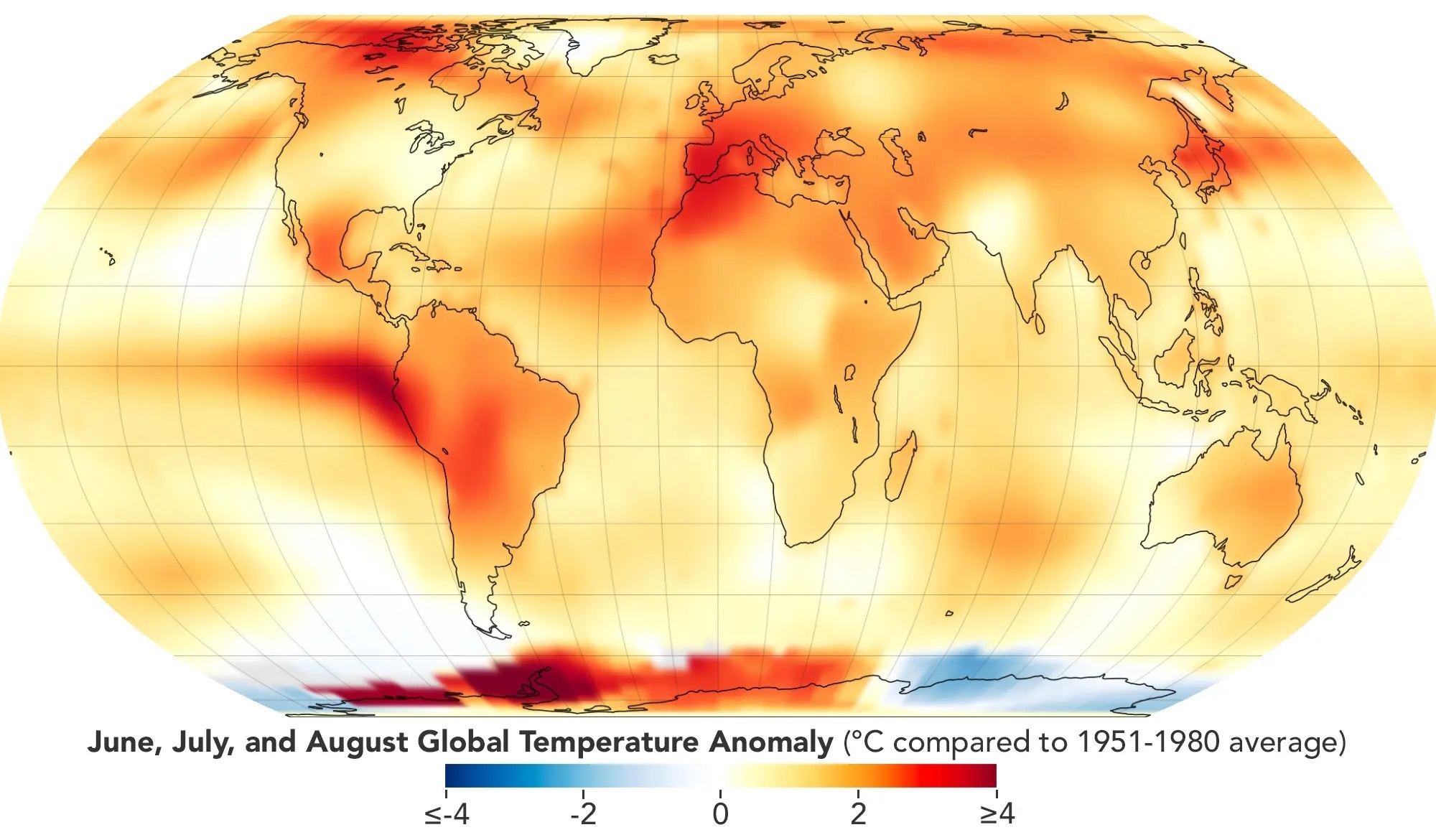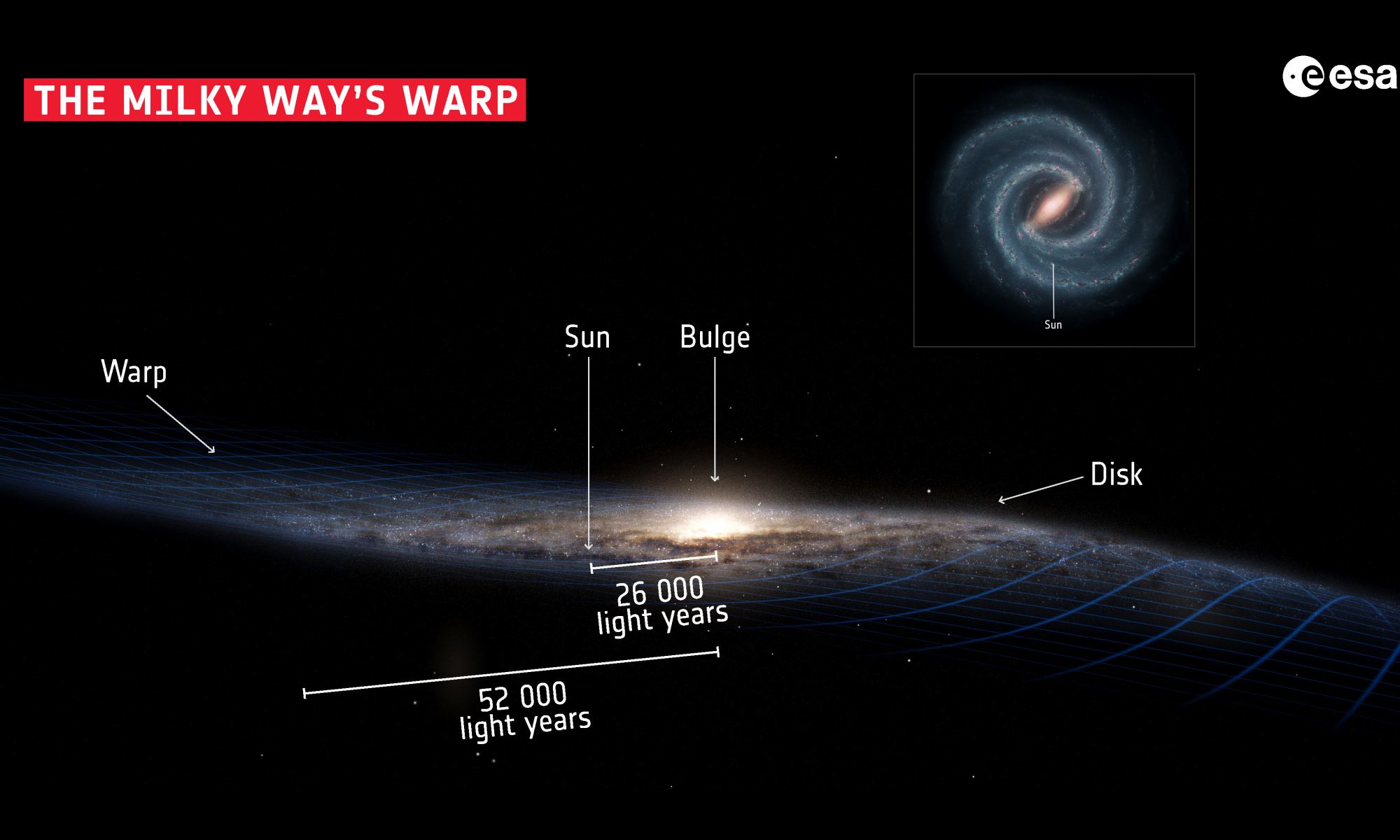It’s difficult to determine the shape of our galaxy. So difficult that only in the last century did we learn that the Milky Way is just one galaxy among billions. So it’s not surprising that despite all our modern telescopes and spacecraft we are still mapping the shape of our galaxy. And one of the more interesting discoveries is that the Milky Way is warped. One explanation for this is that our galaxy has undergone collisions, but a new study argues that it’s caused by dark matter.
Continue reading “The Milky Way's Disk is Warped. Is That Because our Dark Matter Halo is Tilted?”Tiny Swarming Spacecraft Could Establish Communications with Proxima Centauri
Achieving interstellar travel has been the dream of countless generations, but the challenges remain monumental. Aside from the vast distances involved, there are also the prohibitive energy requirements and the sheer cost of assembling spacecraft that could survive the trip. Right now, the best bet for achieving an interstellar mission within a reasonable timeframe (i.e., a single person’s lifetime) is to build gram-scale spacecraft paired with lightsails. Using high-power laser arrays, these spacecraft could be accelerated to a fraction of the speed of light (relativistic speeds) and reach nearby stars in a few decades.
There are a handful of major projects, like Breakthrough Starshot, that hope to leverage this technology to create spacecraft that could reach Alpha Centauri in a few decades (instead of centuries). This technology also presents other opportunities, like facilitating communications across interstellar distances. This is the idea recently by a team of researchers led by the Initiative for Interstellar Studies (i4is). In a recent paper, they recommended that a swarm of gram-scale spacecraft could rely on their launch laser to maintain optical communications with Earth.
Continue reading “Tiny Swarming Spacecraft Could Establish Communications with Proxima Centauri”A New Technique Confirms the Universe is 69% Dark Energy, 31% Matter (Mostly Dark)

How much “stuff” is there in the Universe? You’d think it would be easy to figure out. But, it’s not. Astronomers add up what they can detect, and still find there’s more to the cosmos than they see. So, what’s “out there” and how do they account for it all?
Continue reading “A New Technique Confirms the Universe is 69% Dark Energy, 31% Matter (Mostly Dark)”A New Observatory Will Spot Core-Collapse Supernovae Before They Explode
The thing about a supernova is that you never know when it might occur. Supernovae are triggered either by a collision with another star or when the interior of a massive star becomes depleted of nuclear fuel and begins a rapid collapse. Neither of these show any major optical changes before the explosion, so we are left to scan the sky in the hopes of catching one in its early stages. But that could soon change.
Continue reading “A New Observatory Will Spot Core-Collapse Supernovae Before They Explode”If Astronomers See These Chemicals in a Planet’s Atmosphere, There’s Likely an Advanced Civilization There

In an age of ever-growing numbers of exoplanets circling other stars, it’s natural that astronomers search for signatures of advanced civilizations. Such signatures may have biological or technological origins.
Continue reading “If Astronomers See These Chemicals in a Planet’s Atmosphere, There’s Likely an Advanced Civilization There”NASA Confirms That 2023 was the Hottest Summer on Record

Yesterday, NASA’s Goddard Institute of Space Studies (GISS) announced that the summer of 2003 was the hottest on record. This year saw a massive heat wave that swept across much of the world and was felt in South America, Japan, Europe, and the U.S. This exacerbated deadly wildfires in Canada and Hawaii (predominantly on the island of Maui) and are likely to have contributed to severe rainfall in Italy, Greece, and Central Europe. This is the latest in a string of record-setting summers that are the direct result of anthropogenic climate change.
Continue reading “NASA Confirms That 2023 was the Hottest Summer on Record”Strong Evidence that Supermassive Black Holes Affect Their Host Galaxy’s Chemistry

Supermassive Black Holes (SMBHs) are impossible to ignore. They can be billions of times more massive than the Sun, and when they’re actively consuming stars and gas, they become luminous active galactic nuclei (AGN.) A galaxy’s center is a busy place, with the activity centred on the SMBH.
New research provides strong evidence that while going about their business, SMBHs alter their host galaxy’s chemistry.
Continue reading “Strong Evidence that Supermassive Black Holes Affect Their Host Galaxy’s Chemistry”Engineers Want to Make Methanol by Pulling Carbon Right Out of the Air

Methanol is one of our most extensively used raw materials. It’s used as a solvent, a pesticide, and in combination with other chemicals in the manufacture of plastic, clothing, plywood, and in pharmaceuticals and agrochemicals.
It’s also used as a fuel.
Continue reading “Engineers Want to Make Methanol by Pulling Carbon Right Out of the Air”A 2022 Gamma Ray Burst Was So Powerful, it was Detected by Spacecraft Across the Solar System
On October 9, 2022, a gamma-ray burst illuminated the solar system. Its light had traveled 2.4 billion years to reach us, having begun its journey when only bacteria and archaea existed on the Earth and oxygen was not yet plentiful in our air. Despite its long journey, the flash of light was tremendously bright.
Continue reading “A 2022 Gamma Ray Burst Was So Powerful, it was Detected by Spacecraft Across the Solar System”Stunning New Images from the 2023 ‘Astronomy Photographer of the Year’ Competition

The winners of the 15th annual “Astronomy Photographer of the Year” competition have been announced at the Royal Observatory in Greenwich England. The annual competition features some of the best space photography taken by amateur astrophotographers from around the world.
For the 2023 competition there were over 4,000 entries from 64 countries. Our lead image features an eye-catching capture of an aurora by photographer Andreas Ettl over the Lofoten Islands of Norway.
“Pictures of the aurora such as this are so enchanting,” said one of the competition’s judges, Imad Ahmed. “The icy temperature of the landscape is almost palpable, with the snow-capped mountain framed by the cold emerald hues. … There are a lot of rich details in the picture too, including a canopy of stars subtly strewn across the sky, really adding to the majesty of the shot.”
See more beautiful images below, plus an image that captured a surprising discovery.
Continue reading “Stunning New Images from the 2023 ‘Astronomy Photographer of the Year’ Competition”



